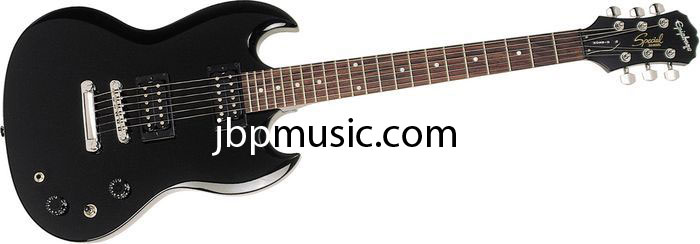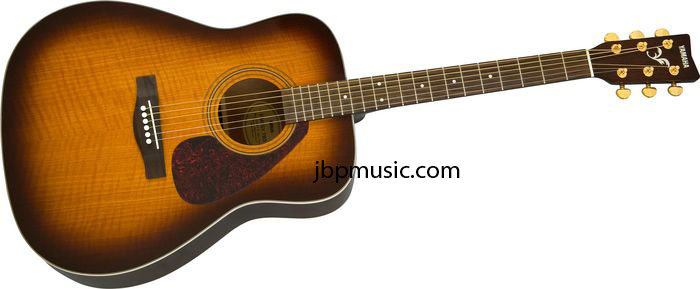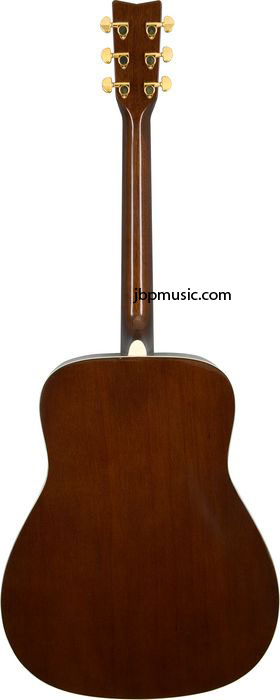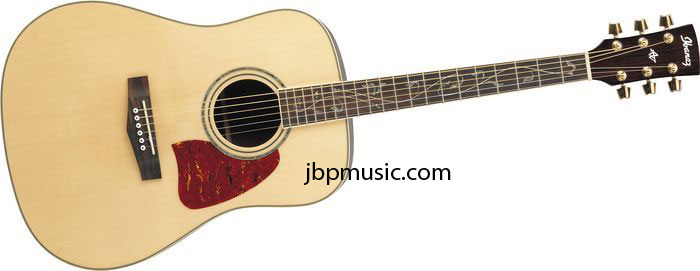The Epiphone SG Special Review
Epiphone SG Special Electric Guitar Review
Bargain instruments are prolific in the modern instrument-sales market. There are large numbers of manufacturers, and there are a huge range of choices for the consumer. Generally, the competition and diversity of designs give consumers a wide range of choices for getting started with electric guitars.
About two years ago, my son wanted to go from using one of my instruments to having a guitar of his own. We talked about what kind of music he was enjoying the most, and what he liked in guitars. I played a fair number of beginner’s guitars (in the less-than-$150 range), showed him several pictures online, and took him to the guitar store a few times to play a range of different instruments. He settled on the venerable Epiphone SG Special (sometimes called the
Epiphone SG Special II because of its dual humbuckers.)
It was an excellent choice – one that is still serving him well two years later. He still enjoys it, and I enjoy borrowing it from him from time to time.
Quick Opinion: The Epiphone SG Special is very light, well-balanced, and has respectable sound. It has reasonable intonation capabilities, and the craftsmanship is at or above par for instruments in its price range.
As an all-around instrument, the SG Special competes very well on quality, price, features, and looks. This is a high-value instrument that is very reasonably priced.
Free Shipping and more information about the Epiphone SG Special II at GuitarCenter.com Playability:
Playability: Playability is the Epiphone SG Special’s strongest suit, next to its price.
The neck is typical Epiphone, slim but substantial, smooth painted, and medium width. It is a shallow “C” profile (in my opinion). It is very easy to access the entire fretboard with this guitar, largely due to its faithful rendition of the classic SG body design.
Whether you like your strings high up (for slide playing, and those with extremely strong hands), or your strings low – this neck serves very well. The frets are a little thin for my tastes, but they do get the job done in a reasonable way.
The balance of neck to body is excellent, particularly when standing and using a strap. The guitar is light and airy in the hands, but is
surprisingly resonant when it is played. I was amazed at how much the body rings with the notes. The light, thin guitar body is unobtrusive to the player’s picking arm, although it is not contoured for ribcage and pick arm rest.
The SG Special came fairly well set up from the factory. The frets were average-dressed for a guitar in this price range. There weren’t, however, any truly bad frets, sharp edges, or major string buzzers (a few spots on the neck, but MUCH less than the typical bargain-priced guitar).
 Features:
Features: The Epiphone SG Special electric guitar is almost par for features in its price range. It is thoroughly average, and has some things that outweigh others in terms of their value.
The body is great. SGs are fun and easy to play, and are a great all-around choice. The neck is a bolt-on affair, with a shallow pocket in the body to accept the heel of the neck. The feel of the neck and the feel/balance of the body are the strongest positives for the SG Special’s feature list. These items, coupled with this guitar’s sound, make the SG Special a good choice for most beginners.
The tuners are below average in quality. Most Squiers come with much better tuners. However, many bargain manufacturers use the same type of tuners (maybe even the same manufacturer? Not sure, they look the same, though). I think this was the first thing we did to mod the SG… we put Grover Rotomatics on, tuned up some new strings, and have seen significantly better tuning stability and accuracy. The Grovers made it much easier to do alternate tunings with thicker strings… the OEM tuners did not hold up well with rock-style thicker strings.
The SG Special has two potentiometer knobs, one for tone on both pickups, one volume for both pickups. The pickup selector switch allows the player to choose neck only (Rhythm), both pickups (a little more punchy and a little louder), and bridge only (Lead) for more clarity, growliness, and grind. The neck pickup is best suited for smooth sounds. The bridge is fairly hot/loud, and serves rock styles very well. The pickups are average in quality for this price range, perhaps a little more than average. They are largely quiet, and are the open-face (no cover) variety.
The pickups are easily adjusted with standard screw setups. The frets are a little on thin and shallow side, but work adequately well in the lower positions of the neck. Towards the body, the frets are a little small for my tastes – I like seeing taller frets for cleaner high notes.
Sound: The Epiphone SG Special sounds great through a nice amplifier. It holds up surprisingly well against guitars that can cost almost twice as much.
Although the pickups certainly aren’t on par with Gibson high output humbuckers or Seymour Duncan humbuckers, they are actually quite nice for a $150 guitar. The stock pickups can do the distortion thing pretty well, and can even pick up enough signal for pinch squeals and slap-plucks. The output of these pickups is pretty good, if not above average. They lack the smoothness and dynamic capability of better pickups – but they do well for beginners.
I was able to set the intonation of this instrument to very nearly ideal. The neck/length/scale is good for basic set up, but isn’t quite perfect. However, I’ve seen bargain instruments that don’t even come close to the SG Special’s tune-ability.
Value: Brand new, out of the box, the SG Special was ready to be played. I just tweaked the intonation and string height at the bridge, tuned it up, and it was ready to go. The SG has simplified tone and volume controls, and is very easy on the hands… Given the overall quality of the instrument, and the sound it makes, this is an instrument that is in the $189 range for
street value - one that you can get for significantly less at your favorite brick-and-mortar vendor or local guitar store establishment.
Overall, the SG Special II is a bargain – one that will last a beginning guitarist for a decent amount of time.
Wishes: I do think this instrument could use two volume and two tone controls. I also wish it was offered in other colors (in addition to dark red and black). The tuners could have been nicer cast-metal tuning machines.
Labels: electric guitar, epiphone sg, epiphone sg special, guitar, instrument, sg, sg special
Yamaha F345/F 345 Sycamore Top Acoustic Guitar Review
Yamaha F345/F 345 Acoustic Guitar Review
Some recent thinning of my instruments caused me to go searching for a really well-rounded acoustic guitar – I needed an instrument that was extremely affordable, but had attributes of more expensive instruments.
I went shopping for a six-string that had a reasonably loud and clear sound, an instrument that was relatively well-intonated, and that I could afford (my target was less than $250)… I played no less than 50 acoustics to find just the right one. I settled on the Yamaha F345. It fit the bill nicely, and was extremely affordable.
 Quick Opinion:
Quick Opinion: The Yamaha F line of acoustic guitars is affordable, seriously consistent in their build quality, and generally a good choice when purchasing a budget all-around acoustic.
The F345, in particular, is exceptionally warm-sounding, and is extremely well-built. The sycamore top offers an interesting sound that is similar to mahogany, but with just a touch more depth. The appointments and features are very good. Overall, the F345 is definitely a keeper.
You can get more information and purchasing info about the Yamaha F345 here at Musician’s Friend.
 Playability:
Playability: The F345 is extremely playable and has a nice balance between comfort for smaller hands and playability for fingerstyle players. Although this is not a true finger-style instrument, a decent amount of room is left over (particularly near the bridge) for those who want to hybrid-pick. It is sized at an average in many respects when it comes to dimensions and build shapes.
For a dreadnaught guitar, smaller players will still find the F345 to be a big guitar. But, as dreadnaughts go, the neck and its attributes help bridge the gap very nicely. The size is just perfect for medium-to-large guitar players, and is still comfortable for those who have big paws.
The neck is really very nice. The finish is smooth and quick, and the shape is excellent. The F345’s neck feels like a graduated soft-V-to-C shape. It has a subtle V near the nut and smoothes down to an excellent C near the body. Of many acoustics I played while looking for the right one, this one had the best neck by far.
The frets are just right for this type of acoustic. They’re not too big, but they’re not the cheap, thin variety placed on many low-cost instruments. The ends are reasonably well-dressed (just a little jaggy here and there), and the string height is quite nice. My only grumbles are that there were a few too many frets that like to buzz. Given the excellent and consistent build quality of this instrument, I thought the frets could have been leveled better.
I generally play phosphor-bronze light strings (11s or so) with this type of instrument. Although I don’t have a gauge, I think this instrument came with 12s – and were 80/20 bronze. If you’re comfortable with more string effort, or don’t do much bending, the factory strings are very reasonable. For those with some difficulty playing harder strings, a quick change to 11s would do very well.
 Features:
Features: The Yamaha F345 has elegant but simple binding on the front and back of the body. The finish is very nice, and is reminiscent of classic finishes from the 50s. It’s not the hard, plastic feel of many acoustics, it’s smooth and feels like a finish on an actual piece of wood. I don’t know what the finish is, but it is a nice, comfortable gloss.
The tuners are really quite nice on the F series instruments, and the F345 is no exception. The tuners strongly resemble and feel like Grover Rotomatics. They have a smooth action, and are very good at keeping the strings in tune. The tuners feel like they’re about 14:1 ratio – tuning up or down is easy and fine.
The wood for the F345 is laminate, but is extraordinarily well-done. The look, the feel, and the sound are well above par for a laminate-build instrument.
In general, the nut is reasonably well-cut and shaped, the bridge is strong (but not a compensated bridge). The rosette is nice and the pickguard is a wonderful, vintage-looking tortoise color. The saddle is a nice rosewood saddle, with well-cut peg holes (many guitars in this price range have terrible peg holes).
Sound: Another place the F345 shines is its sound. It is very warm in the lows, and mellow in the highs. It lacks the shrill high notes that many basic guitars have. In general, it is a nice middle-sound instrument for playing and even for some recording duties.
I’ve found the sycamore wood top to sound slightly warmer than mahogany, but not as dark as cedar. It is definitely growlier and brassier than a spruce top. It’s unusual – but unusual in a way that is very pleasant.
The sound in the upper registers of the strings is above average. The intonation is very close, even in the 12th fret through the 15th fret section of the neck. I find that I don’t have to compensate for intonation very often when playing this instrument.
The sound is reasonably loud – although it is not as loud as a spruce-top guitar. It has enough projection for medium to small spaces and applications. I would recommend amplification for bigger sound areas or for playing in a big group/band.
Value: The F345’s value is very good. It is definitely worth $250 as a street price. You get good sound, reliability, and consistent quality of build in an instrument that is quite attractive.
This particular bargain instrument is worth a decent hard shell case!
Wishes: I don’t have too many wishes for this instrument. It would look nicer with a split binding on the back and binding on the neck. I found some nice faux-tortoise tuner buttons that I’ve installed to give the guitar some nice additional class – the tuner buttons I purchased were built for Grover full-size Rotomatics, and fit like they were made for the Yamaha tuners.
The one wish that I would love to have in this acoustic (as well as other low-cost acoustics) is an adjustable-height bridge – like those in many Alvarez acoustics. Shimming is fine, but the ease of adjustables is hard to argue against.
Labels: acoustic guitar, F 345, F345, instrument, sycamore, yamaha, yamaha guitar
Ibanez ArtWood AW 40 Acoustic Guitar Review

Update, October 2009 Sigh... the AW40 is no longer in production. I've since found a used one that had been dropped and have rehabilitated it into my mountain-trips guitar. Lovely, wonderful, plays well, sounds awesome, even after it was dropped (hard) by its previous owner.
I had been looking for an affordable solid-spruce-top 6-string acoustic for nearly a year. I was looking for medium-bright sound that also had crisp, clean basses, but with good resonance, easy playability, and good intonation. Finding a guitar that meets these expectations, and is under $400, is a real challenge.
I started my quest by playing countless acoustics at both my local guitar stores. I probably played more than 200 different low-cost acoustics – specifically looking for my target attributes.
I eventually discovered the Ibanez AW 40. This delightful acoustic guitar is from Ibanez's ™ ArtWood™ series acoustics. The street price for the AW 40, both locally and on the street was $200US. This new AW 40 turned out to be the guitar I purchased – and I’m very glad I did. I bought the AW 40 (mine is named “Rosie”) from my Sam Ash guy and have played it quite a bit – it has been used on many songs across three different acoustic albums of mine.
Quick Opinion: I chose to play the AW 40 on and off for a few weeks before I actually purchased it. I wanted to play several other contenders in comparison just to be sure:
The AW 40 is a bargain, and is an excellent purchase! It has excellent craftsmanship, good features, and sounds like guitars that cost $200-$300 more. Purchasers of the AW 40 are VERY unlikely to be disappointed! This is the second-most-played-acoustic I own.
Free Shipping and more information about Ibanez Artwood acoustics here at GuitarCenter.com Playability:
Playability: The neck is a delightful satin-finish soft “c”-ish shape (the rosewood color is unique, too). This guitar plays nicer than the gloss-finish necks of many other guitars in this price range.
The frets are finished nicely, and are just the right balance of height and thickness. The scale is just right – medium. There are no buzzy frets on the example I purchased. The string height was a little too low when I brought it home, so I had to change the truss rod just a tad to stop general string buzz. Once I raised the strings a bit, the string sound was flawless.
The weight and depth of the AW 40 body is excellent, and the fretboard feels smooth and quick. The 1 5/8” width nut is just about right for this particular neck.
The AW 40 ships with
D’Addario EXP bronze strings (opens new window), starting with .11 width on the 1st string. These particular strings are really quite nice (especially if you like coated strings), and are appropriate if you like a little darker high sound. After a week or so with the stock strings, I switched to D’Addario EXP phosphor-bronze .11s to give me the crisper bass sounds I was seeking. Once the new strings were installed, this guitar has been giving the low-end
Martin™ guitars (opens new window) a strong run for the money.
Sound: Crisp, crisp, crisp, resonant, and more crisp! The solid spruce top lives up to its job very well. The bass sounds are clean and clear. The 1st and 2nd strings above the 13th fret are a little thin for my tastes. The midranges are clean and rarely muddy for finger-picked notes. The body resonates nicely against your chest and hands when the guitar is played. Very nice!
Value: This is a $450 guitar in value (not 'retail',
'street'). The sound, quality of make, and appointments are top-notch, excellent. To get a better instrument, you’d have to spend at least $499. This guitar is made in China, but you would have difficulty telling its origin from the excellent build quality.
Features: This is an excellently-designed instrument. It has the bits needed for daily use and for recording alike. The body is fully bound in a nice white-with-black stripes motif. The rosette is a beautiful abalone-ringed decoration. The headstock has inlaid pearl Ibanez logo and AW logo. The back of the guitar has a nice black-white center stripe and nicely matched halves. The red-ish shell pickguard does seem a bit bright for the cream-colored spruce top, but is pleasant enough.

An unexpected and
BEAUTIFUL feature of the AW 40 is the
abalone "vine of life" fretboard inlay. This is truly a nice-looking addition, and is really nice and unique. I always get good comments on this feature every time folks see Rosie.
The stock tuners are mechanically sound, but felt a bit uncomfortable. In addition, the gold plating on the tuners was not well done at all. It looked as though the gold had barely been applied (this was true on all the examples I played).
More about the tuners: I ended up replacing the stock machine heads/tuners with Grover™ Rotomatic™-style 14:1 tuners. The screw holes did not match the factory screw placements exactly, but I felt it was worth it to drill new screw holes and putty the old ones – and gain excellent tuners. I bought chrome Grovers, and they look very nice with the rest of the guitar’s appointments. The Grovers function flawlessly and are, well, they're Grovers ('nuff said!).
Wishes: The tuners really should have been better-made and better executed. Even the Yamaha™ basic guitar tuners work better and look better than those on the AW line.
Labels: acoustic guitar, art wood, artwood, aw 40, aw40, guitar, ibanez, instrument





